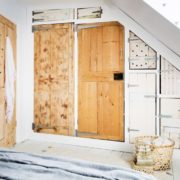An above-ground oil storage tank can be a cost-effective energy solution for residential properties. However, if you are purchasing a home where the yard, basement or garage has an aboveground unit, you need to have it inspected along with every other part of the home. When you are waiting for the inspector to arrive, here are a few potential problem signs you can be prepared to raise questions about.
Examine the Tank Carefully
As you approach the tank you should be able to spot glaring signs of deterioration from a distance. In any case, you should perform a close inspection no matter what you notice initially. Look for obvious issues such as oil stains, rust, corrosion or actual holes in the metal. If the problems are severe you will likely need a service, such as aboveground tank removal Putnam County, to pull the tank and its fittings.
Check the Foundation
The legs upon which the tank rests can be cause for trouble if they are not appropriate to support the weight of the tank when it is full of fuel. By inspecting the legs you may uncover three potential issues: While originally sound, they may have deteriorated; they are on a base beneath which the ground has shifted such that the tank lists; or they were originally inadequate for the task or installed incorrectly in the first place.
Hunt for Old Tanks
Older-home owners who chose this fuel source often buried their tanks. If the home under consideration is an older one, you need to question whether the aboveground unit was installed to replace a leaking underground unit. Search for oil in the grass or dirt. If the aboveground tank has an interior placement, examine the concrete near it for cracks that contain oil residue.
An aboveground oil tank can be a worthwhile home appendage. By making sure a tank is sound before purchasing a house, you can rest easy knowing the fuel will flow smoothly after the fuel delivery truck leaves the yard.







Comments